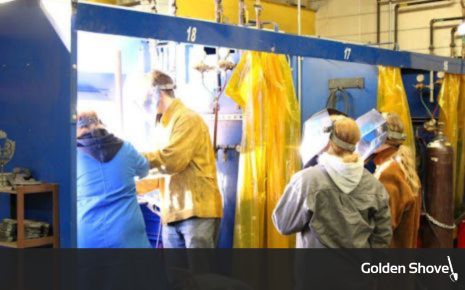Transforming Local Airports into Economic Powerhouses

16 Sep 2024
News, Aerospace & Aviation
Airports are often seen as gateways to the sky, but for economic developers, they represent much more--an untapped economic engine waiting to be harnessed. Our whitepaper, From Runways to Revenue: Economic Benefits of Your Local Airport, dives deep into the economic opportunities airports provide to communities, particularly in rural areas. Through practical examples and in-depth case studies, it illustrates how local airports can drive substantial growth, create jobs, and enhance a region's attractiveness to businesses.
Mason City Municipal Airport: Turning Passion into Profit
The Mason City Municipal Airport in Iowa exemplifies how community engagement can lead to economic benefits. This airport, which serves the small community of Mason City, is more than just a transportation hub. Through its monthly “3rd Thursday Burger Burn,” the airport brings together both locals and visitors from around the country.
Pilots fly in from various states to participate in this recurring event, creating a ripple effect of economic benefits for the local economy. Visitors stay in local hotels, eat at nearby restaurants, and shop in local stores. what began as a community-driven event now stands as a model for how small airports can engage the public and spark economic activity.
For economic developers, Mason City shows the importance of building strong community ties to increase the visibility of an airport. The key takeaway: fostering community involvement through regular events can convert your local airport into a gathering place that benefits local businesses while keeping the airport bustling with activity.
DuPage County Airport: The Power of Strategic Growth
In contrast to smaller airports like Mason City, DuPage County Airport in IL showcases the power of strategic growth and management at a larger scale. Originally a simple grass runway in the 1920s, DuPage County Airport has grown into one of the busiest general aviation airports in the US, generating a $1.5 billion economic impact annually.
The airport serves as a reliever for Chicago's major airports and operates profitably, with no reliance on public subsidies. Its success can be attributed to strategic land use, including a revenue-generating golf course and an industrial park. These developments not only serve the airport's operational needs but also integrate the facility with the surrounding community in innovative ways.
For economic developers, DuPage demonstrates that airports, when properly managed, can become self-sustaining and even profitable ventures. It also highlights the importance of planning for long-term growth, including smart land use and diversifying revenue streams.
Onawa, Iowa: Repurposing a Rural Airport
While some airports thrive, others face the challenge of declining aviation activity. Onawa, Iowa, serves as an important example of how communities can creatively repurpose their airports. Faced with a significant decline in private pilots, Onawa chose to close its airstrip after 60 years of operation and repurpose the land for drag racing.
This shift reflects a growing trend in rural areas where aviation activity has diminished. By converting the airport into a space for dragsters, the community found a way to keep the airfield in use, rather than allowing it to fall into disrepair.
For economic developers, the lesson from Onawa is clear: creativity and adaptability are key. If aviation activity declines, find alternative uses for your airport's infrastructure. Repurposing the land doesn't mean giving up on economic development; it's about finding new ways to use existing resources to benefit the community.
Key Takeaways for Economic Developers
Our recent whitepaper makes one thing clear: airports, regardless of size, can be significant economic assets. The case studies highlight different strategies that economic developers can adopt:
- Community Engagement: Hosting regular events like Mason City's “3rd Thursday Burger Burn” can transform an airport into a hub of local activity and boost tourism and business traffic.
- Strategic Management: DuPage County Airport's focus on diversifying revenue streams and strategic land use planning showcases the importance of thinking beyond aviation.
- Creative Repurposing: If aviation traffic dwindles, communities can follow Onawa's example and repurpose the airport to serve other local interests, ensuring the land remains productive.
Whether you're managing a bustling general aviation hub or a smaller, rural airstrip, the potential to drive economic growth is there--waiting for you to tap into it.
Download the Aviatoin Whitepaper Today
These case studies are just a few examples of the valuable insights found in From Runways to Revenue: Economic Benefits of Your Local Airport. Download the full whitepaper to discover more strategies for leveraging your local airport as an economic engine. Let's work together to bring new growth and opportunities to our communities through aviation.
More Topics


Bismarck Public Schools Empowers Every Learner to Thrive With Career and Technical Education
Sep 11 2024


